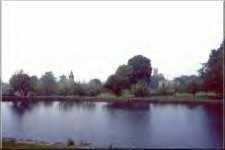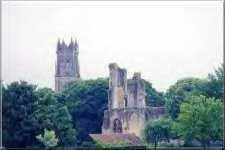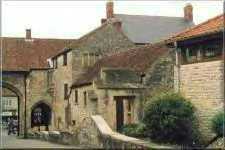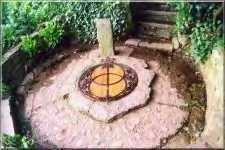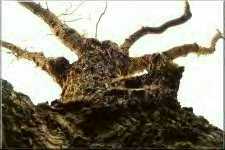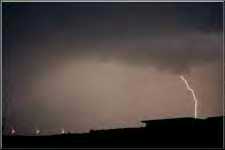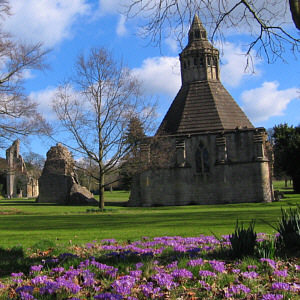Romantic ruins and peaceful parkland - Once the greatest and richest Abbey in England. Now awe-inspiring ruins set in 36 acres of parkland, ponds, orchard and wildlife areas. Visit and be moved by its tragic history.
Legendary burial place of King Arthur - It was here in 1191 that King Arthur and his Queen Guinevere were discovered by the monks.
2000 years of Christian History and Mystery - Traditionally the earliest Christian sanctuary in Britain. Did Joseph of Arimathea bring Jesus here? Sense the prayerfulness where people have worshipped for 2000 years
History Revealed! Hear tales of the past from our costumed guides - From March to October hear tales of Abbey life, the monks that were here and even of King Arthur's court!
A place for all seasons! - Snowdrops and crocus in Winter; Daffodils and Bluebells in Spring; Wildflowers and Native grasses in Summer and Autumn colour on our hundreds of trees.
Glastonbury History
Situated on a major acupuncture point of the Earth body, Glastonbury is one of the most powerful energy centers on the planet. Prophecies have foreseen it playing an important role in the New Age. The entire area around this small town in Somerset has a very holy vibration. It is steeped in the deeply mystical Arthurian legends. These legends symbolize the search for the Holy Grail the Eternal Self, represented by the Silver Chalice used at the Last Supper and for collecting Christ´s blood from the cross. Joseph of Arimathea brought the chalice to Glastonbury where it is supposedly buried. In past years, England´s young seekers have come here to take psychedelic sacraments.
Dod Lane and the trail by Chalice Hill are remains of an old processional path on which the Abbey is situated. "Dod" means dead, and Dod Lane is a spirit path leading to Avalon, the western isle of the dead. The Abbey is supposed to be King Arthur´s burial place.
The Silver Chalice may also be hidden here. The 5th century Melkin Oracle says that one day the chalice in St Joseph´s tomb will be revealed and "thenceforth nor water nor the dew of heaven shall fail the dwellers on that ancient isle".
This is the enduring prophecy of Albion repeated by Blake and renewed by Eliot The last of the Glastonbury monks, Austin Ringwode, prophesied on his death bed: "The Abbey will one day be repaired and rebuilt for the like worship which has now ceased; and then peace and plenty will for a long time abound".
Tor Hill single tower, ruin of what was once a church dedicated to St Michael, crowns this hilltop and represents the Father aspect. The high vibrations of the Glastonbury area seem to increase here.
Magical Glastonbury
An Original Article by Geoffrey Ashe
Glastonbury is unique, sacred, spell-binding. It is a small town town in Somerset, cradled in a cluster of hills that are all different shapes. The highest is the Tor, a whaleback formation with a tower on top, once part of a church dedicated to the Archangel Michael. Near the Tor is the smooth dome of Chalice Hill. Wearyall Hill is a long narrow ridge pointing toward the Bristol Channel. Windmill Hill, on the side facing the cathedral city of Wells, is less clearly defined and covered with houses, Below are the ruins of a great medieval abbey.
Early in the Christian era, the hill-cluster was nearly encircled with shallow water, the river Brue provided a deeper channel enabling sea-going craft to reach it. An old name for it is Ynys-witrin, the Island of Glass; "island" because, from most angles of approach, it would have looked like one. A more famous name is Avalon, the Apple-place. In Celtic lore Avalon was an isle of enchantment.
This area was probably sacred long before Christianity. Around the sides of the Tor is a strange system of terracing. Much weathered and eroded, but still well-defined, it has been interpreted as a maze following an ancient magical pattern, which is found in Cornwall, Wales, Ireland, Pompeii, Crete and India, and even among the Hopi of Arizona, who call it the Mother Earth Symbol. If the maze on the Tor is real, human labour formed it four or five thousand years ago, during the period of vast ritual works that created Stonehenge and Avebury. There are grounds for thinking that the Tor would have been a sanctuary of Goddess-worship. To come down to a somewhat later time, archaeology has shown that toward the beginning of the Christian era, this neighbourhood became an important centre of Celtic population, with far-flung trade. The inhabitants lived on small artificial islands.
According to a much-loved legend, Christian Glastonbury began with the arrival of Joseph of Arimathea. He figures in the Gospels as a rich disciple who obtained the body of Christ and laid it in the tomb. Some say he was an older kinsman and had brought Jesus here as a boy, perhaps on a trading voyage to Britain. Reputedly, in the years after the Crucifixion, he came to this remote country on a mission with several companions. They made their home in Avalon and remained there as a community of hermits. An offshoot of the legend concerns a local variety of hawthorn known as the Glastonbury Thorn. It is said that Joseph planted his staff in the ground, and it became a tree that blossomed at Christmas. Descendants of a medieval hawthorn on Wearyall Hill actually do blossom at Christmas or thereabouts, While no other English hawthorn does this, there are some that do in the Middle East, including Palestine.



